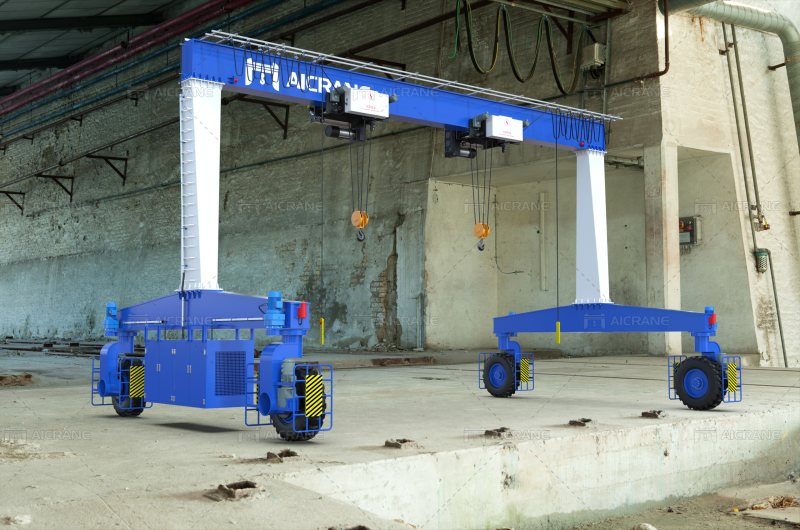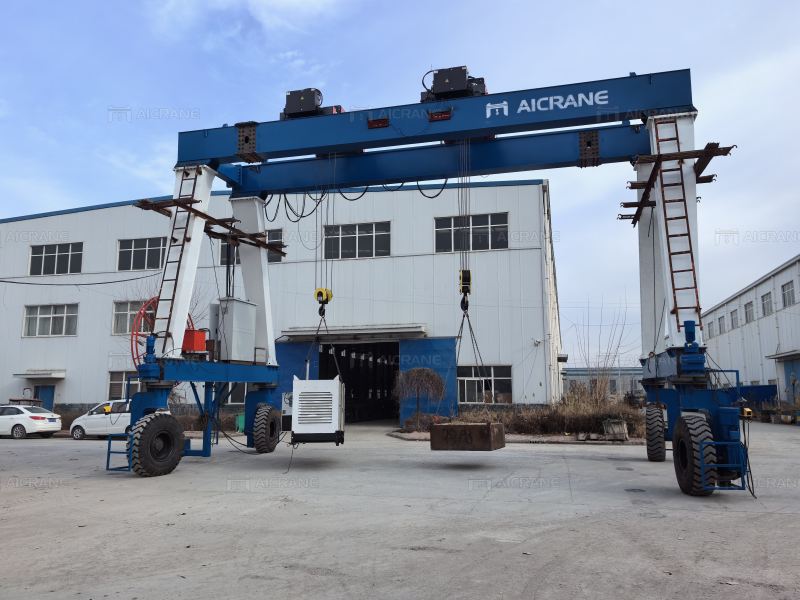In today’s industrial landscape, the emphasis on sustainability has driven the adoption of eco-friendly technologies across various sectors, including logistics and material handling. Electric rubber tired gantry cranes (ERTGs) have emerged as a prime example of innovative, environmentally conscious solutions in port and container terminal operations. This article explores the role of electric rubber tired gantry cranes in promoting sustainable operations, highlighting their eco-friendly features, benefits, and impact on the logistics industry.
Understanding Electric Rubber Tired Gantry Cranes
Electric rubber tired gantry cranes, often referred to as ERTGs, are mobile gantry cranes equipped with rubber tires and powered by electric motors. Unlike traditional diesel-powered gantry cranes, ERTGs operate on electricity, significantly reducing carbon emissions and environmental impact. These cranes are commonly used in container terminals for handling and stacking shipping containers.

Key Features and Benefits
Zero Emissions: One of the primary advantages of ERTGs is their eco-friendly operation. By utilizing electric power, these cranes produce zero emissions at the point of use, contributing to cleaner air quality and reduced carbon footprint in port areas.
Energy Efficiency: ERTGs are more energy-efficient compared to diesel-powered cranes. They can incorporate regenerative braking technology, which recovers energy during braking and transfers it back to the power system, further reducing energy consumption.
Noise Reduction: Electric motors operate more quietly than diesel engines, resulting in reduced noise pollution in and around container terminals. This benefit enhances the working environment for terminal operators and nearby communities.
Flexible Operation: ERTGs are highly maneuverable and can be easily relocated within container yards. Their mobility allows for efficient container handling operations and flexible layout configurations, optimizing terminal space and reducing congestion.
Maintenance Savings: Electric motors generally require less maintenance compared to diesel engines, leading to reduced downtime and maintenance costs over the lifespan of the crane.
Impact on Sustainable Operations
The adoption of electric rubber tired gantry cranes has a significant impact on promoting sustainable operations in container terminals:
Reduced Carbon Footprint: By eliminating diesel emissions, ERTGs contribute to reducing greenhouse gas emissions associated with port operations. This aligns with international efforts to combat climate change and achieve carbon neutrality targets.
Compliance with Regulations: Many ports and maritime authorities impose strict environmental regulations to mitigate air pollution and noise. ERTGs help terminal operators comply with these regulations while maintaining operational efficiency.
Enhanced Corporate Social Responsibility: Embracing sustainable technologies like ERTGs demonstrates a commitment to environmental stewardship and corporate social responsibility, enhancing the reputation of port operators and shipping companies.

Challenges and Considerations
While electric rubber tired gantry cranes offer compelling benefits for sustainability, there are challenges and considerations to address:
Initial Investment: The upfront cost of acquiring and installing ERTGs may be higher compared to diesel-powered equipment. However, the long-term operational savings and environmental benefits justify this investment.
Infrastructure Requirements: Transitioning to electric-powered equipment necessitates adequate electrical infrastructure, including charging stations and power distribution systems within container terminals.
Operational Integration: Terminal operators must consider integrating ERTGs into existing operations and optimizing workflows to maximize efficiency and productivity. The electric rubber gantry crane can adopt single girder or double girder crane design to meet different work needs.
Future Outlook and Industry Trends
The future of electric rubber tired gantry cranes is promising, driven by ongoing technological advancements and industry trends:
Hybrid and Battery Technology: Continued development of hybrid ERTG models and advanced battery technology will further enhance energy efficiency and operational flexibility.
Smart Terminal Solutions: Integration of ERTGs with smart terminal management systems enables data-driven decision-making and optimization of container handling processes.
Collaborative Initiatives: Industry stakeholders, including port authorities, terminal operators, and equipment manufacturers, collaborate to accelerate the adoption of sustainable technologies like ERTGs and drive innovation in the logistics sector.
In conclusion, electric rubber tired gantry crane equipment represent a sustainable solution for modern container terminals, offering environmental benefits, operational efficiency, and long-term cost savings. As the logistics industry embraces sustainability as a core principle, ERTGs play a vital role in promoting greener, cleaner, and more efficient port operations, contributing to a more sustainable future for global trade and maritime transportation.